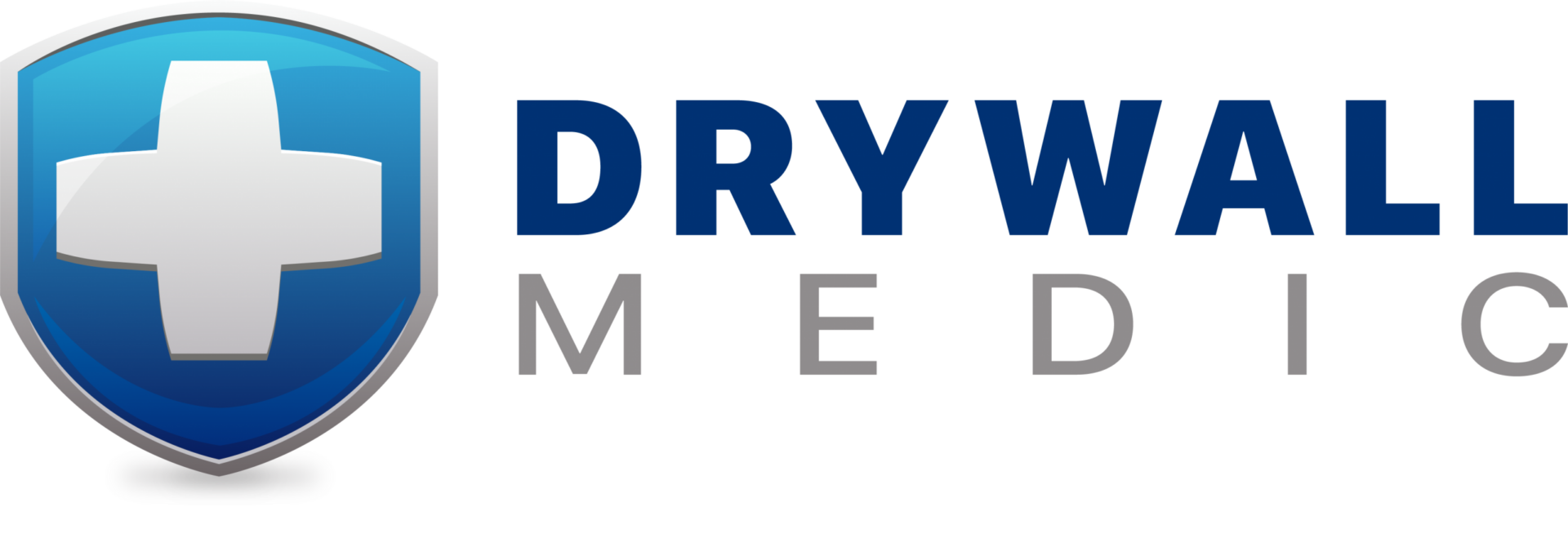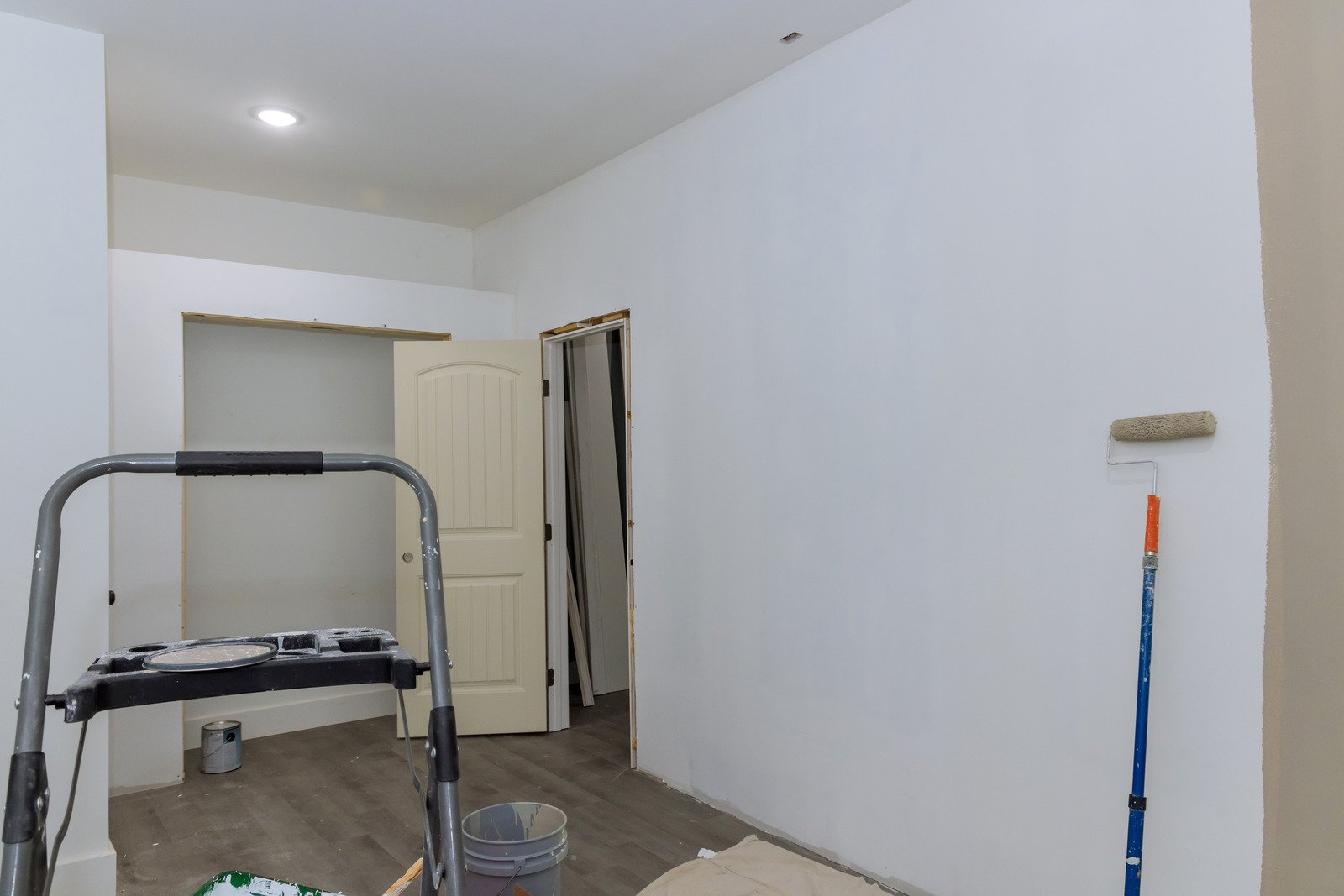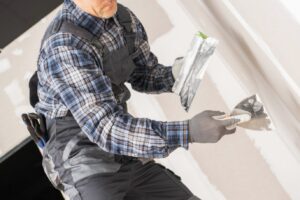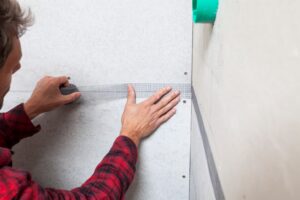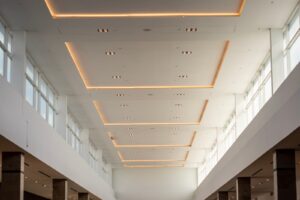When you skip primer after drywall repair, you’re opening the door to a host of problems. Uneven paint absorption can lead to unsightly patches, and the risk of mold growth increases markedly. These issues not only affect the look of your walls but can also lead to costly repairs down the line. Understanding the importance of primer is essential—let’s explore the hidden risks that come with neglecting this key step.
Key Takeaways
-
Skipping primer can result in noticeable color variation between repaired areas and the surrounding wall, leading to an uneven appearance.
-
Without primer, paint may peel due to inadequate adhesion, risking further damage from moisture and environmental changes.
-
Unprimed drywall can absorb moisture, creating a conducive environment for mold growth, which poses health risks.
-
Missing primer increases paint absorption, often requiring multiple coats, raising costs and reducing paint durability.
-
Neglecting primer can lead to texture mismatches, resulting in unsightly visual discrepancies on the wall surface.
Understanding the Role of Primer in Drywall Repair
When you tackle drywall repair, understanding the role of primer is vital to achieving a flawless finish.
Primer benefits your project by sealing the repaired area, ensuring better paint adhesion and a uniform appearance. Without it, you risk uneven paint absorption, leading to a patchy look that’s hard to fix later.
The Impact of Uneven Color and Texture
Even if you’ve done a great job repairing drywall, skipping primer can lead to noticeable problems.
Color Variation
One major issue is color variation; the repaired areas may absorb paint differently than the surrounding wall. This inconsistency can result in patches that stand out, diminishing the overall look of your space.
Texture Mismatch
Additionally, you might encounter texture mismatch. If the repair isn’t perfectly blended with the existing surface, the difference in texture can catch the light differently, creating an unappealing visual effect.
Risks of Peeling Paint Over Time
Skipping primer after drywall repair greatly increases the risk of peeling paint over time. Without primer, paint struggles to adhere properly to the surface, leading to a weaker bond.
Once moisture seeps in, the paint’s durability is compromised. You mightn’t notice issues immediately, but over time, the paint can start to lift and crack, ruining your hard work.
The Potential for Mold Growth
When you skip primer after drywall repair, you’re risking moisture retention that can lead to mold growth.
Moisture Retention Issues
Unprimed drywall is more vulnerable to absorbing moisture from the air. This retention creates an ideal environment for mold to thrive, which can compromise the air quality in your home.
Incomplete Surface Sealing
Without primer, tiny gaps and flaws remain exposed, trapping humidity and allowing mold spores to flourish. High-quality primer seals the surface and helps prevent this risk.
Increased Humidity Effects
As humidity rises, untreated drywall becomes even more susceptible to mold growth. Primer acts as a moisture barrier, shielding your walls from dampness and long-term damage.
Primer as a Sealant Against Moisture
While it might be tempting to skip primer, doing so can leave your walls exposed to moisture damage. Primer serves as an effective moisture barrier, protecting your drywall from humidity and water infiltration.
Enhancing Paint Adhesion and Longevity
Skipping primer affects how well paint sticks to your walls. Primer improves adhesion, ensures even texture, and helps the paint last longer. Without it, paint is likely to peel, chip, or require more frequent repainting.
The Cost of Skipping Primer: A Long-Term Perspective
Skipping primer might save time initially, but it often leads to increased paint absorption, reduced durability, and costly repairs later on.
Increased Paint Absorption
Unprimed drywall absorbs paint quickly and unevenly, forcing you to use more paint and apply multiple coats, which raises costs and shortens paint life.
Potential Mold Growth
Without primer, moisture can seep in and lead to mold. Use a mold-resistant primer and control indoor humidity with ventilation and dehumidifiers to prevent this.
Common Mistakes in Drywall Repair
Many homeowners make at least one common mistake during drywall repair:
-
Skipping surface preparation (like sanding or cleaning)
-
Applying joint compound unevenly
-
Using the wrong type of drywall tape
-
Not allowing layers to dry properly
Avoiding these mistakes helps your repair last and look more professional.
Choosing the Right Primer for Your Project
The right primer depends on your wall and paint type:
-
Water-based primer – Best for general indoor use
-
Oil-based primer – Great for stain-blocking and high-traffic areas
-
High-build primer – Ideal for textured or patched surfaces
Make sure the primer works with your drywall surface and chosen paint.
Step-by-Step Guide to Proper Drywall Repair and Priming
-
Clean the damaged area
-
Apply joint compound and smooth it out
-
Let it dry fully
-
Sand until flush with the wall
-
Wipe off dust
-
Apply primer evenly
-
After it dries, paint the wall
Following these steps ensures a smooth, lasting result.
Frequently Asked Questions
Can I Use Leftover Paint Instead of Primer?
No. Paint and primer serve different purposes. Using paint alone won’t seal or prepare the surface properly.
How Long Should I Wait Before Painting After Priming?
At least 2 hours. Wait longer in humid or cold environments to ensure proper drying.
Is It Necessary to Sand the Drywall Before Applying Primer?
Yes. Sanding smooths the surface and improves adhesion.
What’s the Best Way to Apply Primer?
Use a roller for large areas and a sprayer or brush for corners and detailed spots.
Can I Skip Primer if I Use High-Quality Paint?
No. Even premium paint needs a primer base for proper adhesion and finish.
Conclusion
Skipping primer after drywall repair can lead to uneven paint, peeling, and even mold growth. By taking the time to apply primer, you protect your walls, improve paint durability, and avoid future problems. It’s a small step with big benefits—don’t skip it!
